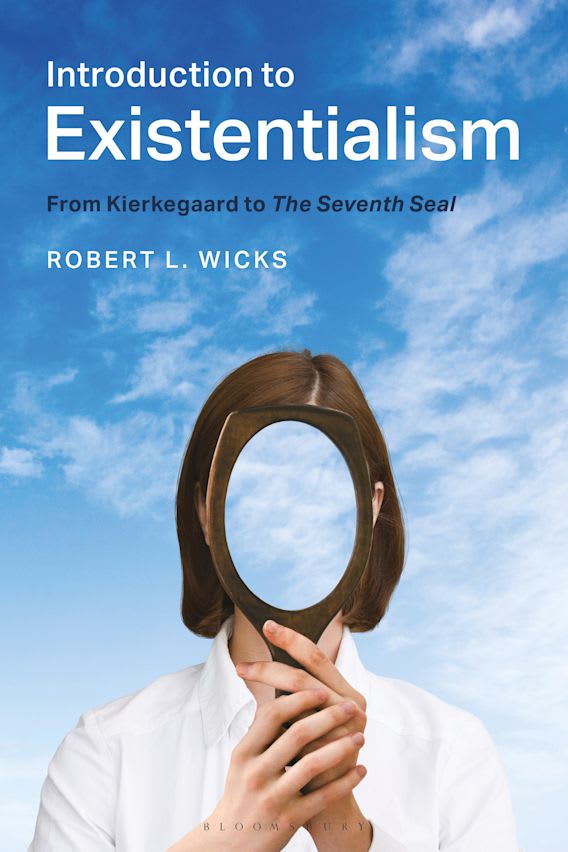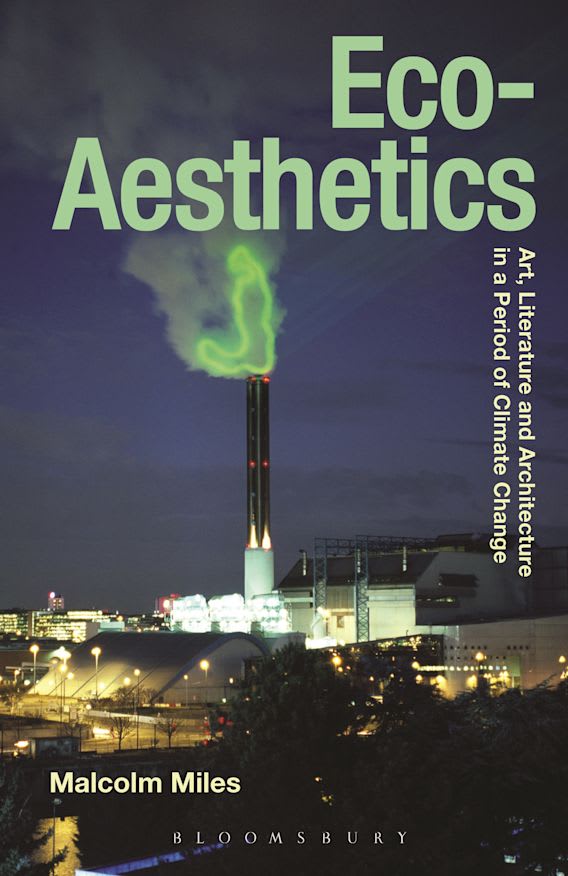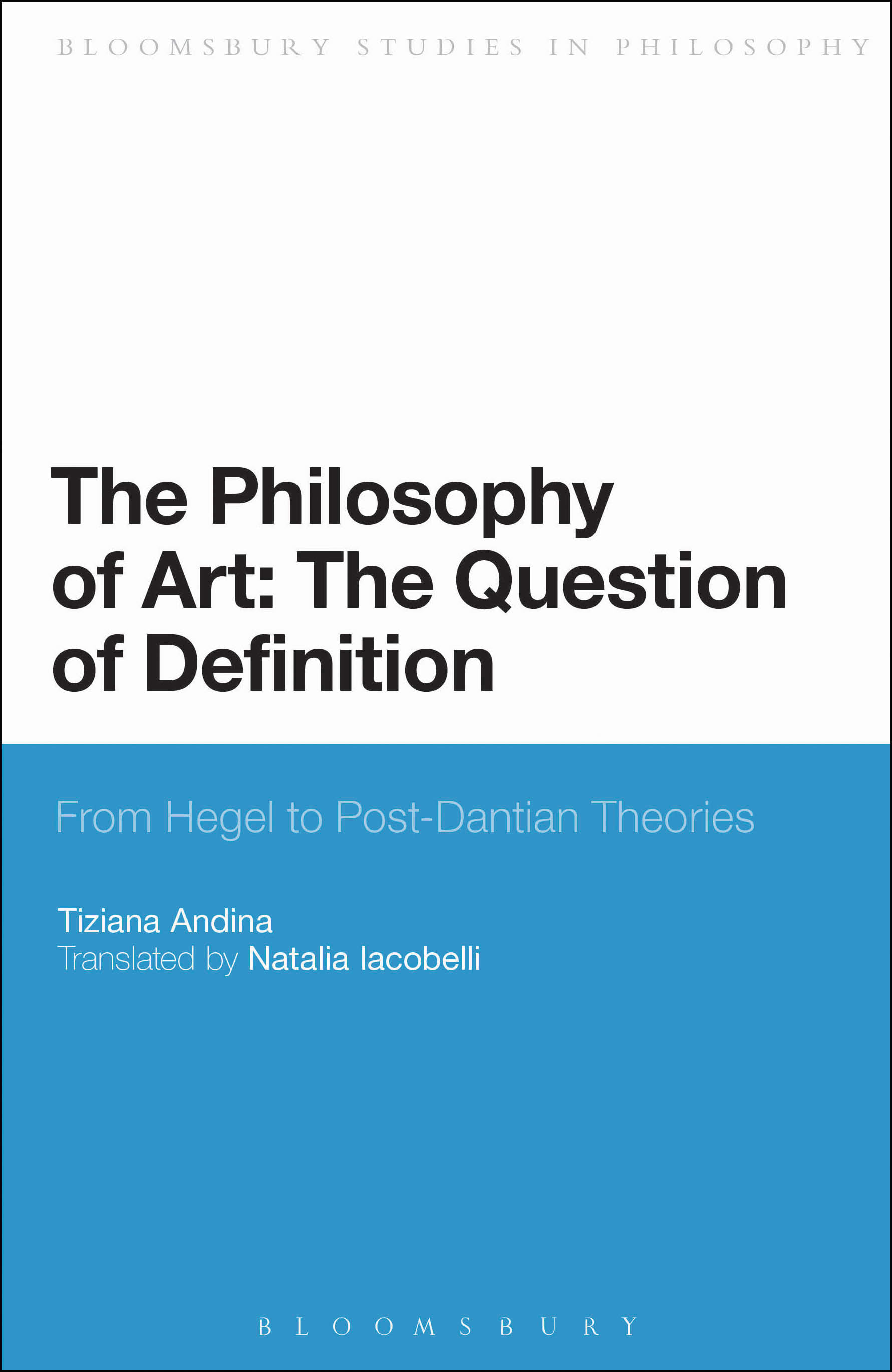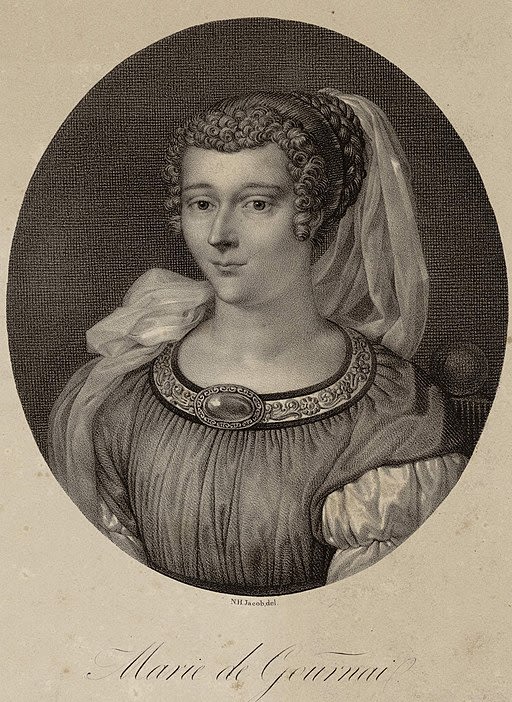


Are you sure you want to reset the form?
Your mail has been sent successfully
Are you sure you want to remove the alert?
Your session is about to expire! You will be logged out in
Do you wish to stay logged in?
Please note that you will need to be logged in to view the content featured below
Explore free-to-access content from Bloomsbury 20th-Century French Thought, one of the four collections in the Bloomsbury Philosophy Library. This Topic in Focus brings together chapters that offer analysis of philosophical movements and theories that have emanated from France and influenced the development of literary theory. Ranging from existentialism to deconstruction and structuralism to post-structuralism, these chapters present thoughtful insights for both seasoned scholars and those newly venturing into French thought. Plus, find biographical entries of key French thinkers from the Bloomsbury Encyclopedia of Philosophers, another of the four collections in the Bloomsbury Philosophy Library.
Jump to:

'Introduction: An Earthly and Earthy Outlook' by Robert L. Wicks
in Introduction to Existentialism: From Kierkegaard to The Seventh Seal
Robert L. Wicks presents a definitive introduction to existentialist philosophical theory, the movement’s key thinkers and their cultural influence. Starting with an overview of its 19th century historical roots, chapters cover the key players in traditional existentialism – Kierkegaard, Nietzsche, Heidegger, Sartre, de Beauvoir, and Camus – and adopt a thematic approach, with chapters on Christian and Jewish existentialism, existentialism in America, existential psychology and existentialism in the cinema.

‘Introduction’ by Felicity Joseph, Jack Reynolds and Ashley Woodward
in The Bloomsbury Companion to Existentialism
What exactly is existentialism? What does it mean to ‘study existence’? Joseph, Reynolds and Woodward consider these questions and challenge outdated perceptions of the subject in their call for coverage of the latest research. Their introduction to this practical guide charts a brief history of existential philosophy and research in existentialism, as well as existentialism in relation to existence, phenomenology, contemporary politics and feminism.

'In the beginnings: Introducing Poetics of Deconstruction' by Lynn Turner
in Poetics of Deconstruction: On the Threshold of Differences
Bringing Derrida’s philosophy into dialogue with continental feminist philosophy, this book rethinks key terms in the humanities through an exploration of deconstruction and animal studies. Lynn Turner develops an intimate attention to independent films, art and the psychoanalyses by which they might make sense other than under continued license of the subject that calls himself man.

‘The Grammar of Deconstruction’ by Stefan Herbrechter and Ivan Callus
in Encountering Derrida: Legacies and Futures of Deconstruction
The idea of a ‘grammar of deconstruction’ runs counter to some of deconstruction’s instincts. This exploratory chapter draws on a range of thinkers from Grevisse to Deleuze to consider whether a grammar of deconstruction is possible, and to imagine the parameters and nature of such a grammar.

‘Structuralism’ by Gary Genosko
in The Deleuze and Guattari Dictionary
Gary Genosko considers the different strands of structuralism, including Saussurean and Chomskyan, the Barthes-Hjelmslev variations of linguistics, and Lacanian psychoanalysis, in this cross-referenced A-Z guide to the key terms, ideas, and major works of Gilles Deleuze and Felix Guattari.

in Why There Is No Poststructuralism in France
In France, the label ‘poststructuralism’ as used in international intellectual discourse is unknown. However, standard treatments of post-structuralism often start with a canon of authors led by French thinkers such as Jacques Derrida and Michel Foucault. This chapter by Johannes Angermuller traces the history of poststructuralism’s emergence from structuralism, before turning to the question of why there is no poststructuralism in the country where the movement’s origins lie.

‘Marx Through Post-Structuralism’ by Simon Choat
in Marx Through Post-Structuralism: Lyotard, Derrida, Foucault, Deleuze
What can be made of Marx after post-structuralism? What is Marx without ideology, with no dialectic, where the economic is not determinant, where class is not centre stage? In this chapter, Simon Choat revisits Marx via a post-structuralist reading, drawing on the work of four post-structuralist theorists: Lyotard, Derrida, Foucault, and Deleuze.

in Articles
Where other philosophers look for conditions of possibility, Guattari looks for conditions of possibilization, asking how creative possibilities can be introduced into social, ontological, linguistic or historical configurations. This exclusive introduction to Felix Guattari’s Lines of Flight considers the work’s place in Guattari’s thought and in the context of his fellow philosophers.
Explore biographical entries from Bloomsbury Encyclopedia of Philosophers, another of the four collections in the Bloomsbury Philosophy Library. View four free-to-access biographies below, or explore the full list of biographical entries for 20th-Century French Thinkers here.
Explore fresh ways of thinking about the environment and how to live on our planet. This collection offers free-to-read book chapters, case studies, and primary texts on themes including ecosophy, environmental aesthetics, the picturesque, and environmental activism, alongside peer-reviewed biographical entries of key philosophers in the field.

In Eco-Aesthetics: Art, Literature and Architecture in a Period of Climate Change
Malcolm Miles addresses recycling as a way to make art and as an element of alternative living seen in DIY culture and self-build housing. Alternating between art and culture, he asks what revolutions in everyday life indicate possibilities for a green society and what insights are gained from the use of tacit knowledges in dealing with environmental or social issues.

In Schizoanalysis and Ecosophy: Reading Deleuze and Guattari
This chapter looks at the concept of ecosophy as defined by Félix Guattari. Defining ecology broadly Guattari covered mental and social as well as environmental ecology; and his views on ecosophy also encompassed fields like media ethics and our relationship to the technosphere.

In The Bloomsbury Companion to Aesthetics
The past 50 years have witnessed the rise of a new field: environmental aesthetics. This field has emerged largely in reaction to aesthetics’ traditional focus on the arts, and marries with another burgeoning field—the aesthetics of nature. This chapter looks at the scope of environmental aesthetics, its relation to the aesthetics of nature, and recent directions and themes in the field.

Brian Treanor asks how radical environmentalism should be given that its effect can be alienating as well as energizing. After drawing on ideas such as Paul Ricoeur’s ‘social imaginary’ and on case studies in the roles of ideology and utopia, he turns to the question of which narratives would be most effective in persuading the public of the need for environmental action.

In Case Studies
heather ahtone, Senior Curator at First Americans Museum (FAM) in Oklahoma City, and visual artist Norman Akers examine Okesa II, an oil painting on panel made by Akers. Featuring an elk standing in shallow water at the edge of a rolling plain, it displays cosmological balance between earth and sky that resonates with concepts of social balance within Osage epistemology. Akers’ painting provides a chance for us to understand Osage culture and philosophy, demonstrating the value of using an indigenous perspective to analyze art.
Image credit: Norman Akers, Okesa II. Used with permission of the artist.

In Case Studies
Tracing the route of the Mississippi river, Theodore Gracyk examines the way in which we look to art more than nature as their source of aesthetic reward: natural things lack the sharp boundaries that typify most art and there is no one way to view them. Drawing on painting, literature, music and philosophy, Gracyk considers the aesthetic experiences of nature.
Image credit: © Courtesy of the New York Public Library
Leopold was an influential figure in the development of environmental ethics. His most well-known and philosophically important essay, “The Land Ethic”, expands the confines of ethical relations between individuals and society to include land.
Rachel Louise Carson (1907 – 64)Known as the “mother of the environmental movement”, Carson’s central philosophical principle of ecology was that all life on the planet is related both to other life and to the planet itself.
Seyyed Hossein Nasr (1933 – )Nasr’s environmental philosophy stands out from contemporary discourse, especially in America. He argues that our defacing of the earth began when we defaced the Other, namely God, and calls for a return to “sacred wisdom”.
Bloomsbury was delighted to attend the 2022 American Society for Aesthetics Conference. In celebration, we put together chapters themed around the conference sessions.
All chapters are hosted on Bloomsbury Contemporary Aesthetics or Bloomsbury History of Modern Aesthetics, two online collections in the Bloomsbury Philosophy Library which bring together primary and secondary material along with a range of pedagogical resources.

Related chapter:
The Nature of Fiction by David A. Davies
In Aesthetics and Literature
David A. Davies looks at several outlier cases to consider the nature and definition of fiction, looking at stylistic and semantic conceptions of fiction, functional theories of fiction, and the idea of a “true fiction”.

Case study:
The Whitened Female Face in Contemporary China by Eva Kit Wah Man
In Case Studies
In this case study, Eva Kit Wah Man considers the question of why whiter skin is valued in contemporary China, looking at what skin tone is thought to denote about a woman’s class, temperament, and emotions.

Digital anthology:
Introduction to Aesthetics and Politics in the Global South by J. Daniel Elam
From Aesthetics and Politics in the Global South
Aesthetics and Politics in the Global South brings together aesthetic and political writing from South East Asia, South Asia, Africa, the Caribbean, and Latin America during the twentieth and twenty-first centuries.
Read the General Editor’s Introduction here

Related chapter:
Aesthetic and Artistic Value by Sondra Bacharach and James Harold
In The Bloomsbury Companion to Aesthetics
Sondra Bacharach and James Harold examine the moral, political, aesthetic, and cognitive values of art, and consider how the different values interact.

Case study:
Wim Delvoye, Tim by E.M. Dadlez and Laura Sizer
In Case Studies
In this case study, E.M. Dadlez and Laura Sizer consider the artistic value of tattoos, and look at the case of Tim Steiner to consider the status of an artwork that is part of a human body.

Related chapter:
The Beauty of Nature by R.G. Collingwood
In Outlines of a Philosophy of Art
Read a free chapter from Outlines of a Philosophy of Art, a neglected work by R.G. Collingwood, which is exclusively available online as part of the Bloomsbury History of Modern Aesthetics collection.

Introductions to Primary Texts:
Introduction to Samuel Alexander’s Beauty and Other Forms of Value by Michael Rush
Beauty and Other Forms of Value (1933) was Samuel Alexander’s final monograph. It drew together many of his ideas on aesthetics that had been published over the preceding decade and weaved them into something greater than the sum of those parts.
Read the introduction to this primary text

Related chapter:
On the Impossibility of Definition by Tiziana Andina
In The Philosophy of Art: The Question of Definition: From Hegel to Post-Dantian Theories
Looking at Wittgenstein’s theory of family resemblances, Andina evaluates the arguments of William Kennick and Morris Weitz, and assesses the strengths of neo-Wittgensteinian criticism. She also considers Arthur Danto’s theory of narrative sentences as well as normalist and documental theories of art.

Case study:
Wedding Cakes by Brian Soucek
In Case Studies
In this case study, Brian Soucek uses the Supreme Court case regarding the cake artist who refused to serve a gay couple to consider whether the wedding cake in question was a form of artistic expression, and, more broadly, whether food can be art.

Related chapter:
The Description of Taste I: Immediacy and Necessity by James Kirwan
In The Aesthetic in Kant: A Critique
This chapter examines the phenomenological question of the conditions Kant lays down for a feeling to lay claim to being a judgement of taste. Kirwan considers Kant’s criteria of subjectivity, universality, and his idea of beauty as aesthetic merit.

Introductions to Primary Texts:
Introduction to Georg Friedrich Meier’s Excerpt from the Doctrine of Reason by J. Colin McQuillan
Georg Friedrich Meier’s Excerpt from the Doctrine of Reason is the logic textbook that Kant used in his lectures at the University of Königsberg during his teaching career (1755–1796). Meier’s Excerpt is particularly noteworthy because of the way that he incorporates aesthetics into logic.
Read the introduction to this primary text
Bloomsbury Philosophy Library includes a selection of primary texts, secondary literature, and exclusive articles exploring the relationship between film and philosophy. The content below offers an introduction to some of the key thinkers and contentious debates.
What can film teach us about philosophy? Find out how it is possible to use philosophy to better appreciate films.

Cinema I is the first volume of Deleuze's revolutionary work on the theory of cinema. Drawing on the philosophy of Henri Bergson, Deleuze identified his work as “a logic of the cinema”, setting out to “isolate certain cinematographic concepts” philosophically. To do this, he brings together a wide range of examples from a variety of major filmmakers, including Ingmar Bergman, Charlie Chaplin, Sergei Eisenstein and Alfred Hitchcock, among many others.
You can read Irene Han’s new introduction to the text here.

Cinema II is Deleuze's second work on cinema, completing the reassessment of the art form begun in Cinema I. Influenced by the philosophy of Henri Bergson, Deleuze here offers a compelling analysis of the cinematic treatment of time and memory, thought and speech. The work draws on examples from major film makers, including Federico Fellini, Alfred Hitchcock and Orson Welles, among many others.
You can read Irene Han’s new introduction to the text here.

After we have left the cinema or turned off the television, we may start wondering about the film’s deeper meaning, its themes, moral, or message – for example, what the film tells us about life and death, love, power, sexuality or even the nature of film itself. And even if we don’t look for deeper meaning, we almost certainly form judgments about whether the film was any good, judgments that go beyond mere preference and aspire to objectivity. This suggests that there are three principal activities performed by the thinking film viewer: comprehension, interpretation, and evaluation. In other words, contrary to the familiar disparagement, there is nothing ‘mindless’ about the entertainment films provide.
You can read more about The Thinking Viewer in Aesthetics and Film by Katherine Thomson-Jones here.

New Philosophies of Film welcomes both passionate film enthusiast and dedicated philosophical reader (who may well be one and the same!) and aims to show how the emerging ‘field’ of film and philosophy is one of the most exciting in aesthetics today. It is intended both as an introduction to the dynamic new wave of philosophizing on film, and as an independent contribution to this emerging field of interdisciplinary engagement.
You can read the introduction here.

In Film Fables Jacques Rancière turns his critical eye to the history of modern cinema. Combining an extraordinary breadth of analysis with an attentiveness to detail born from an obvious love of cinema, Rancière shows us new ways of looking at and interpreting film. His analysis moves effortlessly from Eisenstein's and Murnau's transition from theatre to film to Fritz Lang's confrontation with television, from the classical poetics of Mann's Westerns to Ray's romantic poetics of the image, from Rossellini's neo-realism to Deleuze's philosophy of the cinema. The book also includes extended commentaries on the work of Hitchcock, Godard, Vertov and Bergman.
You can read Chapter 10 Documentary Fiction: Marker and the Fiction of Memory, here.

In the first book-length introduction to Deleuze's work on film from a feminist perspective, Teresa Rizzo ranges across Deleuze's books on Cinema and feminist re-workings of his philosophy to re-think the film viewing experience. More than a commentary on Deleuze's books on Cinema, Rizzo's work addresses a significant gap in film theory, building a bridge between the spectatorship studies and apparatus theories of the 1970s, and new theorisations of the cinematic experience. Developing a concept of a 'cinematic assemblage', the book focuses on affective and intensive connections between film and viewer. Through a careful analysis of a range of film texts and genres that have been important to feminist film scholarship, such as the Alien series and the modern horror film, Rizzo puts Deleuze's key concepts to work in exciting new ways.
You can read the Introduction, and Chapter 1 The Cinematic Apparatus and the Transcendental Subject, here.
How is aesthetics relevant to politics? Why study aesthetics in terms of the political? Is an artist ever independent from political reality? Can aesthetics influence environments and our lived experience? Is it possible for aesthetics to become institutionalized?
Bloomsbury Philosophy Library includes a selection of primary texts, secondary literature and exclusive articles connecting aesthetics and politics.
The content below focusses on theories of aesthetics and politics from a variety of time periods and cultural contexts, providing examples across a range of art forms.

Friedrich Shiller offers a powerful example of the ways in which philosophy can speak to its time and become a relevant form of critique. As an artist, Schiller understood his practice as a way of denouncing, subverting and interrupting what he saw as the forms of violence inhabiting his present. As a philosopher, he sought to clarify the sense in which this suspension, interruption, or resistance against violence can take place aesthetically.
In this new introduction to Schiller’s letters, María del Rosario Acosta López’s shows how approaching Schiller on his own terms, and following his own historically located concerns, we can arrive at a reading of his Aesthetic Letters as timely as ever.
You can read the introduction here.

For Schiller our aesthetic frameworks are always already intertwined with the social and political context we live in and they are transformed by it in ways that, in turn, transform our ways of perceiving and understanding the world around us. An attention to the aesthetic as condition of possibility of our experience means therefore, for Schiller, also an uncovering of the kinds of structures that quietly and unperceivably end up a-critically determining the way we act and interpret reality altogether.
This is the reason why, for Schiller, there is no political revolution without a revolution in the way we feel and sense the world. Or, put the other way around, our sensibility and sensitivity to the world are already determined by mechanisms of control and power which condition us in a certain way; they are as historically determined as everything else.
Aesthetics, in Schiller’s work, is the critical outlook par excellence. It is not merely one more topic in addition to ethics and epistemology, as it is for Kant; instead, it opens up and makes possible another ethics and another epistemology, new and distinct ways of knowing, feeling and relating to one another.
Read the Second and Third Letter here.

The 18th century is often said to have involved a radical transformation in the concept of art: from the understanding that art is tool for some practical purpose, to the modern belief that it holds a distinctive and intrinsic value. By exploring the ground between these notions of art’s function, Karl Axelsson reveals how scholars of culture made taste, morals, and a politically stable society an integral part of their claims about the experience of nature and art.
Axelsson re-examines the political relevance of theories by two of the most prolific men of letters in the eighteenth century, Joseph Addison (1672–1719) and the third Earl of Shaftesbury (1671-1713), Axelsson shows that they were, first and foremost, seeking to fortify a natural link between the aesthetic experience and the consolidation of modern political society.
Political Aesthetics is a wonderful re-write of the history of early eighteenth century British aesthetic thought.
You can read the introduction here.

This one-of-a-kind collection imitates the heterogeneity of Indian aesthetic experience in its unusually diverse range of topics. Not only does it cover contemporary scholarly, historical, creative and comparative extensions, criticisms, and transcreations of “rasa” theory, it presents a philosophy of artistic practices across a wide range of genres - epistemology, phenomenology, ontology, ethics, and politics.
Each essay affords a glimpse of the original philosophical research of a leading thinker in the field of Indian aesthetics right now in early twenty-first century. More than a history of Indian aesthetics and survey of Indian philosophies of art, these essays add new waves to the ocean of Indian reflections on art, aesthetic experience, and practice.
Mahatma Gandhi is widely perceived to be indifferent if not opposed to aesthetic experience. An icon of uncompromising moralism, Gandhi led a sparse life, in the austere surroundings of his ashrams and is assumed to be opposed to aestheticism and the arts that flourish in leisure. Openly critical of Western civilization and its seduction of the senses, Gandhi can be imagined to be out-Plato-ing Plato in denigrating the shadow-world that movies immerse us in.
‘Towards a Gandhian Aesthetics’ explores Mahatma Gandhi’s outwardly dry but inwardly highly emotional aesthetic life, enriched by his relationship to medieval devotional poetry and the Hindi poet Tulsidas.
You can read Tridip Suhrud’s essay here.

Dissensus comprises a series of articles written by Jacques Rancière between 1990 and 2008 in which we learn about two of his most important concepts: the “aesthetics of politics” and the “politics of aesthetics”. The aesthetics of politics refers to the power of dissensual practices which can manifest social change. These are actions in which collective subjects’ exercise their equality and the way in which it is threatened through popular organizations in which existing rights are deployed or new ones are created, to assert denied entitlements and challenge conditions of injustice, creating institutions that allow for the expansion or creation of egalitarian possibilities. For Rancière, emancipation refers precisely to this demonstration of equality that anyone can put into practice, in various manifestations of their capacity.
In this illuminating collection, Rancière engages in a radical critique of some of his major contemporaries on questions of art and politics: Gilles Deleuze, Antonio Negri, Giorgio Agamben, Alain Badiou and Jacques Derrida. The essays show how Rancière's ideas can be used to analyse contemporary trends in both art and politics, including the events surrounding 9/11, war in the contemporary consensual age, and the ethical turn in aesthetics and politics. Rancière elaborates new directions for the concepts of politics and communism, as well as the notion of what a 'politics of art' might be.
You can read chapter 9, ‘The Aesthetic Revolution and Its Outcomes’, here.
You can read more about the life and work of Jacques Rancière here.

The first academic monograph dedicated solely to Laruelle's unique contribution to aesthetic theory and specifically the 'non-philosophical' project he terms 'non-aesthetics'. This undertaking allows Laruelle to think about art outside the boundaries of standard philosophy, an approach that Fardy explicates through a series of case studies. By analysing the art of figures such as Julia Margaret Cameron, Anish Kapoor, Dan Flavin, and James Turrell as well as the drama of Michael Frayn, Fardy's new book enables new and experienced readers of Laruelle to understand how the philosopher's thinking can open up new vistas of art and criticism.
You can read the introduction here.

Schizoanalysis holds that art's function is both political and aesthetic – it changes perception. If one cannot change perception, then, one cannot change anything politically. This is why Deleuze and Guattari always insist that artists operate at the level of the real (not the imaginary or the symbolic). Ultimately, they argue, there is no necessary distinction to be made between aesthetics and politics. They are simply two sides of the same coin, both concerned with the formation and transformation of social and cultural norms. Deleuze and the Schizoanalysis of Visual Art explores how every artist, good or bad, contributes to the structure and nature of society because their work either reinforces social norms, or challenges them. From this point of view we are all artists, we all have the potential to exercise what might be called a 'aesthetico-political function' and change the world around us; or, conversely, we can not only let the status quo endure, but fight to preserve it as though it were freedom itself.
Edited by one of the world's leading scholars in Deleuze Studies and an accomplished artist, curator and critic, this impressive collection of writings by both academics and practicing artists is an exciting imaginative tool.
You can read the introduction here.

Philosophy flourished in the Islamic world for many centuries, and continues to be a significant feature of cultural life today.
Find out more through our free content made available in celebration of World Philosophy Day.
Access articles on all the major and less well-known thinkers of Islamic philosophy since the foundation of the faith, many of which have not previously been profiled or described in English. Every major school of thought, from classical falasifa to Sufi mysticism, is represented, ranging across the early years of the faith to the modern period.
From medicine to mysticism, existentialism to phenomenology, the lives and work of women thinkers have all too often been marginalised in ways that have erased their contributions from the record.
The weight of this historical exclusion has led and continues to lead to creative theoretical responses to art, sexual difference, and lived experience which remain ripe for study and research today.
Bloomsbury Philosophy Library includes a selection of primary texts, secondary literature and exclusive articles exploring the crucial work of women philosophers. The content below opens up our understanding of the role women have played in shaping intellectual thought and philosophy.

When the public figure Simone de Beauvoir picked up her pen she wrote not only for herself but for her readers. Her best-selling autobiographies have been described as embodying a philosophical ambition to show ‘how one’s self is always shaped by others and related to others’. To read more about Beauvoir’s vast and rich contribution to 20th-century philosophy read the chapter, ‘Queen of Existentialism’, from Kate Kirkpatrick’s critical biography of her life, and for a shorter overview of her life’s work read the encyclopedia article on the Bloomsbury Encyclopedia of Philosophers.
Drawing on existentialism’s relevance to the creation of identity, as well as its ability to challenge “essentialist” conceptions of identity, in terms of both the individual self and categories such as gender, race, and culture, The Bloomsbury Companion to Existentialism provides a fruitful resource for a range of applications. Read more in the chapters Existentialism, Feminism and Sexuality and Existentialism and the Emotions.

Dorothea Christiane Erxleben (1715-62). (Credit Alamy © Fine Art Images/Heritage Images)

